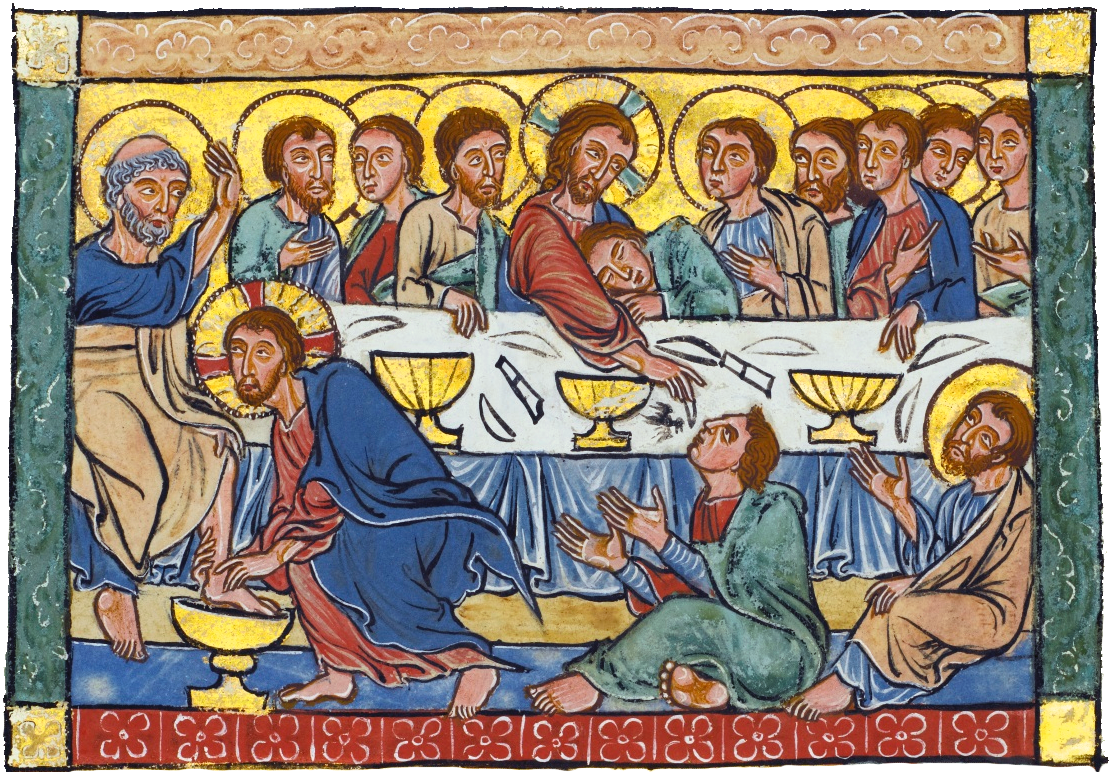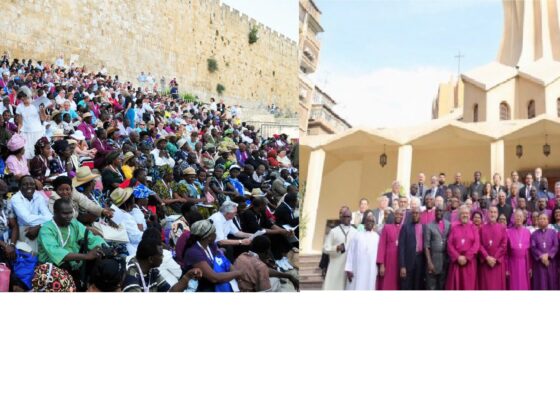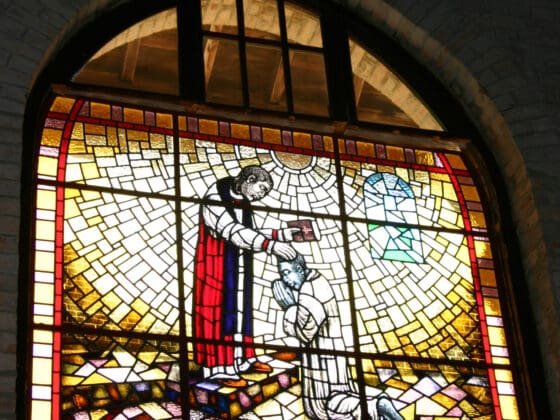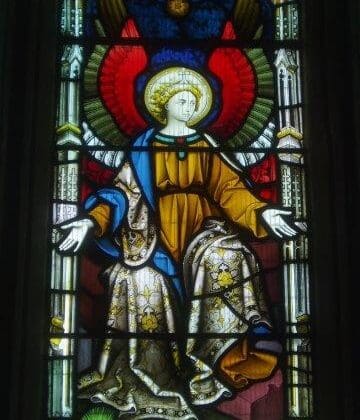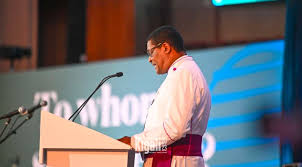This year I participated in the midnight and morning Christmas services at our parish church. I read the Gospel from St. Luke at the first service and heard a sermon on the Gospel from St. John the next day. The first reading – the nocturnal mystery of the babe in the manger – gave way to the blazing noonday of the Word was made flesh.
On Christmas morning our preacher circulated a card with this painting of the two apostles Peter and John, who had rushed to the Empty Tomb on Easter morning.
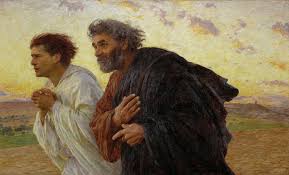
The portraits of the older bearded Peter and the intense young John got me thinking. You see, I am one of those who thinks John, “Apostle and Evangelist,” is probably not John the son of Zebedee, one of the Twelve (my wife: “kindly keep this to yourself!”). Either way, the young man who, swift as an eagle, outraced Peter to the Tomb, became the old man who tarried behind the other apostles and martyrs in order to pen his memoir of Jesus, his dear friend (John 21:23).
My thought then ranged from the Empty Tomb to the Last Supper, where one of the disciples, the one whom Jesus loved, “reclined on Jesus’ bosom” (John 13:23 KJV). This “Beloved Disciple” identifies himself as the author of the Gospel (John 21:24). If, as I think, he was not one of the Twelve or even one of the inner circle of three who saw Jesus’ Glory on the Mount, who then is he? (my wife: “pay attention to the sermon!”). No, this John was Jesus’ bosom friend.
Part of the beauty of Christmas night is the physical intimacy of Jesus and His mother. She “brought forth her first-born son and wrapped him in swaddling clothes and laid him in a manger.” Surely, she did not leave Him lying in the manger all night. No, surely she cradled Him in her arms, clasped Him to her bosom and kissed Him. As Christina Rosetti puts it: “But his mother only,/ In her maiden bliss,/ Worshipped the Beloved/ With a kiss.”
For moderns, the term “bosom” (Greek kolpos) is usually associated with “buxom”; hence recent translations often substitute the bland “side.” But in the Bible, men could also share one another’s bosom. The beggar Lazarus died and was “carried to the bosom of Abraham” (Luke 16:22). God can speak as a nursing mother (Isaiah 49:15), but it is the masculine Good Shepherd who will gather the lambs in his arms and carry them in his bosom (Isaiah 49:11).
The idea of God’s bosom led me back to the final verse of John’s “prologue” (unfortunately shorted out in the Prayer Book lections):
No man has seen God; the only Son, who is in the bosom (kolpon) of the Father, he has made him known. (John 1:18 RSV)
One cannot help turning from these final words of divine intimacy back to the first words of the prologue: “In the beginning was the Word and the Word was with God, and the Word was God.” As our preacher ably explained, this intimate union of God and His Word was “in the beginning before the beginning,” that is “before all ages.” Indeed He is the Creator of the ages, for all things were created through Him. He is the sempiternal Light, in whom we see light; He is the true and eternal Life, who with the Father was made manifest to us (Psalm 36:9; 1 John 1:2).
The opening and final verses are united in the middle: “the Word became flesh and dwelt among us” (verse 14). In pondering that this verse came from the pen of the Beloved Disciple, I was struck by this thought: John had literally pressed the flesh of Jesus, not the flesh of the hand but of the heart. He had listened not only to Jesus’ public preaching but was privy to His “Personal” thoughts: “I am the Good Shepherd,” “I am the Way the Truth and the Life,” “I and the Father are one.” He alone among the apostles had stood with Mary on Calvary and witnessed Jesus’ corpse, pierced and oozing water and blood, taken down. And when he and Peter entered the empty tomb, it was he who “saw and believed” that Jesus was risen bodily from the dead.
It is in this sense that John’s Gospel soars like an eagle above the Synoptic Gospels, essential as they are. It is John’s Gospel that became the prime source of the doctrine of the Trinity. Perhaps we could paraphrase John’s message for us: “from the bosom of the Son to the bosom of the Father.”
I suspect there was a temptation of John’s own disciples to want to lean back on the old man’s bosom and soak up every memory he had of Jesus. He alludes to this himself when he writes: “Now there are also many other things that Jesus did. Were every one of them to be written, I suppose that the world itself could not contain the books that would be written” (John 21:25). But John resisted the temptation and wrote just one book for our sake:
Now Jesus did many other signs in the presence of the disciples, which are not written in this book; but these are written so that you may believe that Jesus is the Christ, the Son of God, and that by believing you may have life in his name. (John 20:30-31)
It is enough for us to come to Jesus the living Word and lay our heads upon His breast:
I heard the voice of Jesus say,
“Come unto me and rest;
lay down, O weary one, lay down
your head upon my breast.”
I came to Jesus as I was,
weary and worn and sad;
I found in him a resting place,
and he has made me glad.
